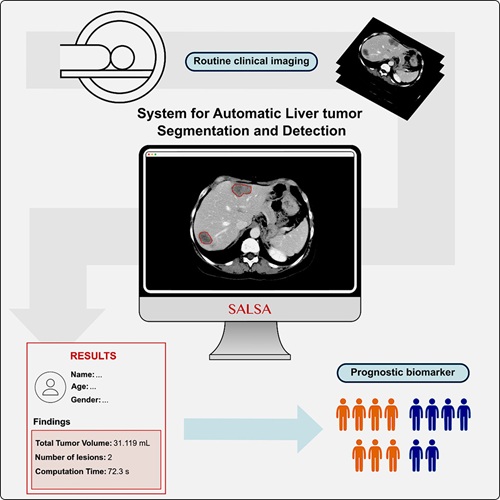Imaging Platform Unifies PACS, RIS, Reporting, Connectivity and Clinical Applications
|
By MedImaging International staff writers Posted on 20 Mar 2013 |
A new imaging unified management platform is designed to achieve clinical productivity, improve serviceability, and streamline integration efforts across the enterprise. This system reshapes capabilities typically found in a radiology information system (RIS), picture archiving and communication system (PACS), reporting, and connectivity into just one system.
Current imaging modalities such as computed tomography (CT) angiography, magnetic resonance imaging (MRI), and mammography stretch the capacities of the hospital’s PACS infrastructure while also requiring more work from the radiologists themselves. The Impax Agility system resolves these hurdles by providing a fully integrated solution that offers medical imaging professionals access to pertinent and varied clinical data in one platform. Its streamlined interface and intuitive features make it user-friendly, optimizing the radiologist’s productivity.
Impax Agility, developed by Agfa Healthcare (Mortsel, Belgium), provides support for a wide range of diagnostic areas. It includes dedicated tools for general radiology, ultrasound, mammography, cardiology, and angiography. The zero-footprint, Web 2.0 viewer, based on Agfa HealthCare’s Xero visualization platform, provides convenient access to results on a variety of the most popular web browsers.
The system utilizes hanging protocols, which present studies and images in a consistent manner, even from different modalities. These hanging protocols were devised based on real radiologist behavior, for an automated workflow that reduces redundant, manual tasks.
A three-dimensional (3D) imaging engine offers new, intuitive ways to explore anatomy and pathology without requiring a separate application. Axial, coronal, and sagittal planes, for example, can be combined to constitute a 3D view of the body from any perspective. The 3D engine can also render MIP/MPR/3D in any viewport.
Macros in reports provide an exam-based template structure for the radiologist. This both speeds up the reporting workflow and helps avoid omissions. Powerful task-based workflow engines help to ensure that all users follow the appropriate steps for each procedure and circumstance, and for their own workflow. This supports the hospital in meeting regulatory obligations and workflow best practices, as well as improving communication.
Impax Agility has been successfully deployed at the AZ Sint-Rembert Hospital, in Torhout (Belgium). Radiologists there found the image display, workflow management, and personalized settings supported their efforts to provide top patient care. “Impax Agility has enabled us to improve our service and increase productivity. With Impax Agility, we can cope with the challenge of increasingly complex imaging and software developments, such as cardio- or angio-CT, which can be easily integrated. We are convinced Agfa HealthCare will be our partner on our path to the future of medical imaging,” stated Dr. Biebau, medical director and head of radiology.
“We are very excited to show the investments we are making in the Impax product line with Impax Agility at ECR 2013,” commented James Jay, vice president and global head of radiology information technology (IT), Agfa HealthCare. “It is much more than a PACS; it is an intuitive platform with an innovative approach to workflow optimization, which supports our vision of image management across the healthcare continuum.”
Currently, the system is a work in progress.
Related Links:
Agfa Healthcare
Current imaging modalities such as computed tomography (CT) angiography, magnetic resonance imaging (MRI), and mammography stretch the capacities of the hospital’s PACS infrastructure while also requiring more work from the radiologists themselves. The Impax Agility system resolves these hurdles by providing a fully integrated solution that offers medical imaging professionals access to pertinent and varied clinical data in one platform. Its streamlined interface and intuitive features make it user-friendly, optimizing the radiologist’s productivity.
Impax Agility, developed by Agfa Healthcare (Mortsel, Belgium), provides support for a wide range of diagnostic areas. It includes dedicated tools for general radiology, ultrasound, mammography, cardiology, and angiography. The zero-footprint, Web 2.0 viewer, based on Agfa HealthCare’s Xero visualization platform, provides convenient access to results on a variety of the most popular web browsers.
The system utilizes hanging protocols, which present studies and images in a consistent manner, even from different modalities. These hanging protocols were devised based on real radiologist behavior, for an automated workflow that reduces redundant, manual tasks.
A three-dimensional (3D) imaging engine offers new, intuitive ways to explore anatomy and pathology without requiring a separate application. Axial, coronal, and sagittal planes, for example, can be combined to constitute a 3D view of the body from any perspective. The 3D engine can also render MIP/MPR/3D in any viewport.
Macros in reports provide an exam-based template structure for the radiologist. This both speeds up the reporting workflow and helps avoid omissions. Powerful task-based workflow engines help to ensure that all users follow the appropriate steps for each procedure and circumstance, and for their own workflow. This supports the hospital in meeting regulatory obligations and workflow best practices, as well as improving communication.
Impax Agility has been successfully deployed at the AZ Sint-Rembert Hospital, in Torhout (Belgium). Radiologists there found the image display, workflow management, and personalized settings supported their efforts to provide top patient care. “Impax Agility has enabled us to improve our service and increase productivity. With Impax Agility, we can cope with the challenge of increasingly complex imaging and software developments, such as cardio- or angio-CT, which can be easily integrated. We are convinced Agfa HealthCare will be our partner on our path to the future of medical imaging,” stated Dr. Biebau, medical director and head of radiology.
“We are very excited to show the investments we are making in the Impax product line with Impax Agility at ECR 2013,” commented James Jay, vice president and global head of radiology information technology (IT), Agfa HealthCare. “It is much more than a PACS; it is an intuitive platform with an innovative approach to workflow optimization, which supports our vision of image management across the healthcare continuum.”
Currently, the system is a work in progress.
Related Links:
Agfa Healthcare
Latest Imaging IT News
- New Google Cloud Medical Imaging Suite Makes Imaging Healthcare Data More Accessible
- Global AI in Medical Diagnostics Market to Be Driven by Demand for Image Recognition in Radiology
- AI-Based Mammography Triage Software Helps Dramatically Improve Interpretation Process
- Artificial Intelligence (AI) Program Accurately Predicts Lung Cancer Risk from CT Images
- Image Management Platform Streamlines Treatment Plans
- AI-Based Technology for Ultrasound Image Analysis Receives FDA Approval
- AI Technology for Detecting Breast Cancer Receives CE Mark Approval
- Digital Pathology Software Improves Workflow Efficiency
- Patient-Centric Portal Facilitates Direct Imaging Access
- New Workstation Supports Customer-Driven Imaging Workflow
Channels
Radiography
view channel
AI Radiology Tool Identifies Life-Threatening Conditions in Milliseconds
Radiology is emerging as one of healthcare’s most pressing bottlenecks. By 2033, the U.S. could face a shortage of up to 42,000 radiologists, even as imaging volumes grow by 5% annually.... Read more
Machine Learning Algorithm Identifies Cardiovascular Risk from Routine Bone Density Scans
A new study published in the Journal of Bone and Mineral Research reveals that an automated machine learning program can predict the risk of cardiovascular events and falls or fractures by analyzing bone... Read more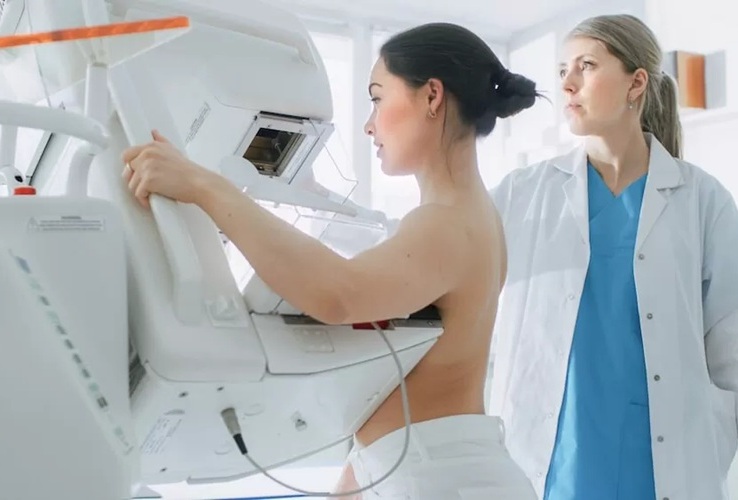
AI Improves Early Detection of Interval Breast Cancers
Interval breast cancers, which occur between routine screenings, are easier to treat when detected earlier. Early detection can reduce the need for aggressive treatments and improve the chances of better outcomes.... Read more
World's Largest Class Single Crystal Diamond Radiation Detector Opens New Possibilities for Diagnostic Imaging
Diamonds possess ideal physical properties for radiation detection, such as exceptional thermal and chemical stability along with a quick response time. Made of carbon with an atomic number of six, diamonds... Read moreMRI
view channel
New MRI Technique Reveals Hidden Heart Issues
Traditional exercise stress tests conducted within an MRI machine require patients to lie flat, a position that artificially improves heart function by increasing stroke volume due to gravity-driven blood... Read more
Shorter MRI Exam Effectively Detects Cancer in Dense Breasts
Women with extremely dense breasts face a higher risk of missed breast cancer diagnoses, as dense glandular and fibrous tissue can obscure tumors on mammograms. While breast MRI is recommended for supplemental... Read moreUltrasound
view channel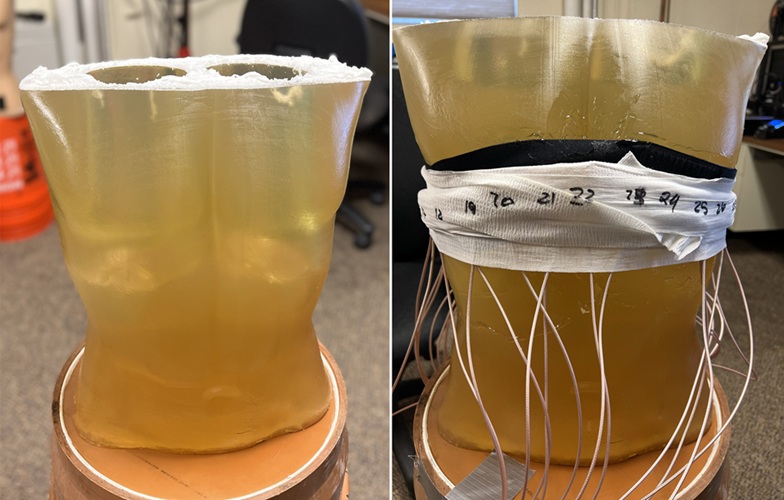
New Medical Ultrasound Imaging Technique Enables ICU Bedside Monitoring
Ultrasound computed tomography (USCT) presents a safer alternative to imaging techniques like X-ray computed tomography (commonly known as CT or “CAT” scans) because it does not produce ionizing radiation.... Read more
New Incision-Free Technique Halts Growth of Debilitating Brain Lesions
Cerebral cavernous malformations (CCMs), also known as cavernomas, are abnormal clusters of blood vessels that can grow in the brain, spinal cord, or other parts of the body. While most cases remain asymptomatic,... Read moreNuclear Medicine
view channel
New Imaging Approach Could Reduce Need for Biopsies to Monitor Prostate Cancer
Prostate cancer is the second leading cause of cancer-related death among men in the United States. However, the majority of older men diagnosed with prostate cancer have slow-growing, low-risk forms of... Read more
Novel Radiolabeled Antibody Improves Diagnosis and Treatment of Solid Tumors
Interleukin-13 receptor α-2 (IL13Rα2) is a cell surface receptor commonly found in solid tumors such as glioblastoma, melanoma, and breast cancer. It is minimally expressed in normal tissues, making it... Read moreGeneral/Advanced Imaging
view channel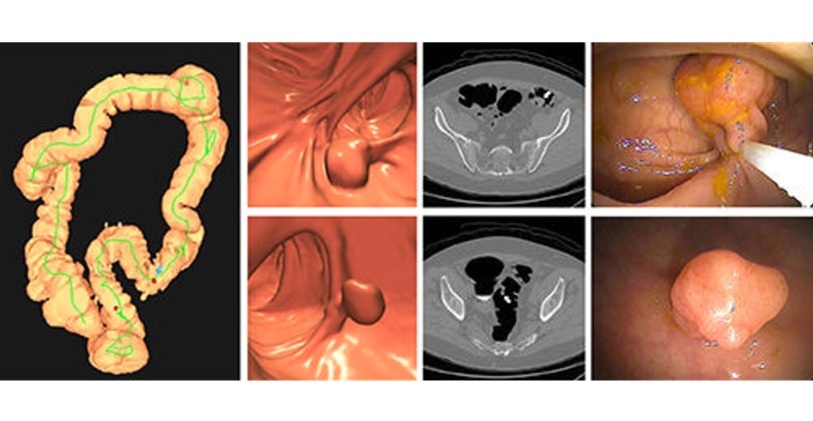
CT Colonography Beats Stool DNA Testing for Colon Cancer Screening
As colorectal cancer remains the second leading cause of cancer-related deaths worldwide, early detection through screening is vital to reduce advanced-stage treatments and associated costs.... Read more
First-Of-Its-Kind Wearable Device Offers Revolutionary Alternative to CT Scans
Currently, patients with conditions such as heart failure, pneumonia, or respiratory distress often require multiple imaging procedures that are intermittent, disruptive, and involve high levels of radiation.... Read more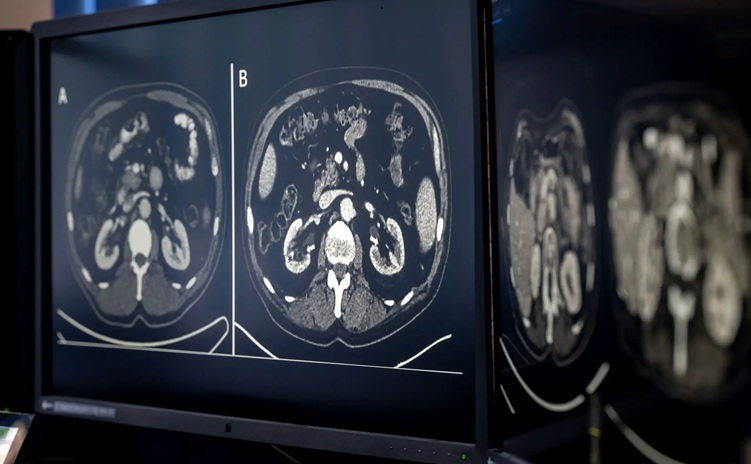
AI-Based CT Scan Analysis Predicts Early-Stage Kidney Damage Due to Cancer Treatments
Radioligand therapy, a form of targeted nuclear medicine, has recently gained attention for its potential in treating specific types of tumors. However, one of the potential side effects of this therapy... Read moreIndustry News
view channel
GE HealthCare and NVIDIA Collaboration to Reimagine Diagnostic Imaging
GE HealthCare (Chicago, IL, USA) has entered into a collaboration with NVIDIA (Santa Clara, CA, USA), expanding the existing relationship between the two companies to focus on pioneering innovation in... Read more
Patient-Specific 3D-Printed Phantoms Transform CT Imaging
New research has highlighted how anatomically precise, patient-specific 3D-printed phantoms are proving to be scalable, cost-effective, and efficient tools in the development of new CT scan algorithms... Read more
Siemens and Sectra Collaborate on Enhancing Radiology Workflows
Siemens Healthineers (Forchheim, Germany) and Sectra (Linköping, Sweden) have entered into a collaboration aimed at enhancing radiologists' diagnostic capabilities and, in turn, improving patient care... Read more














.jpeg)



